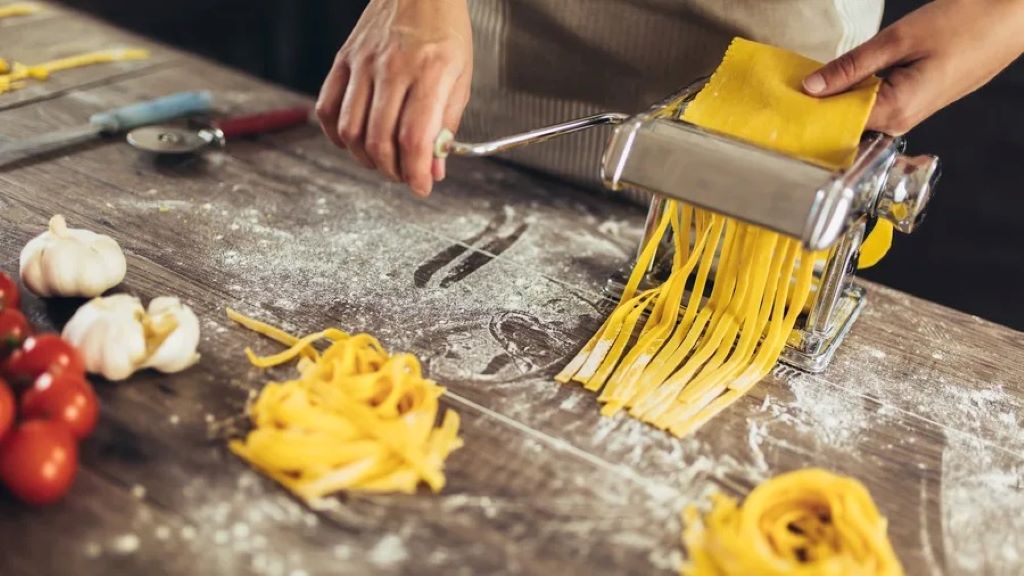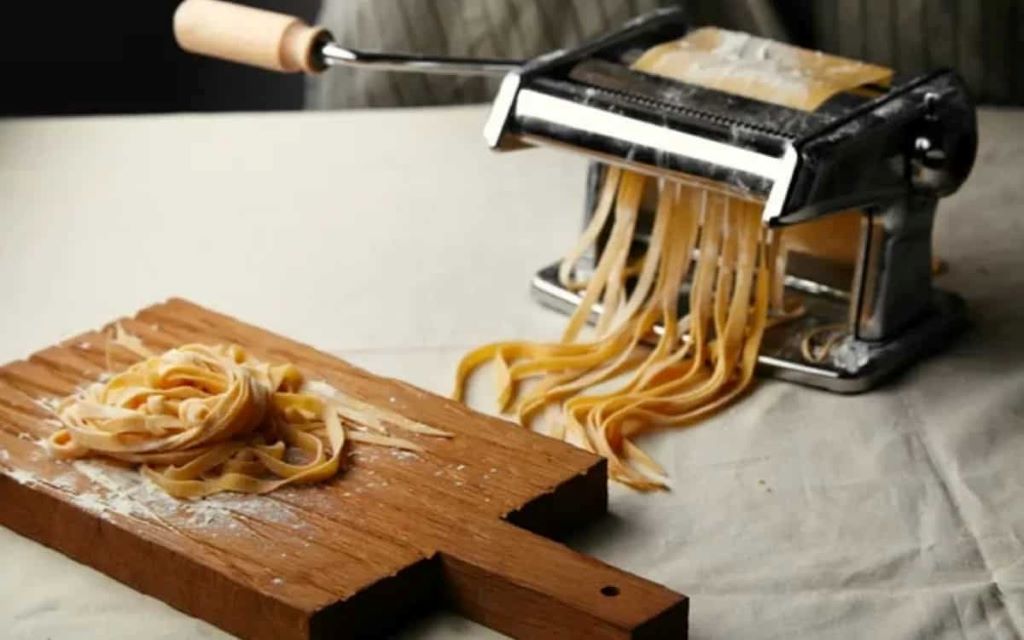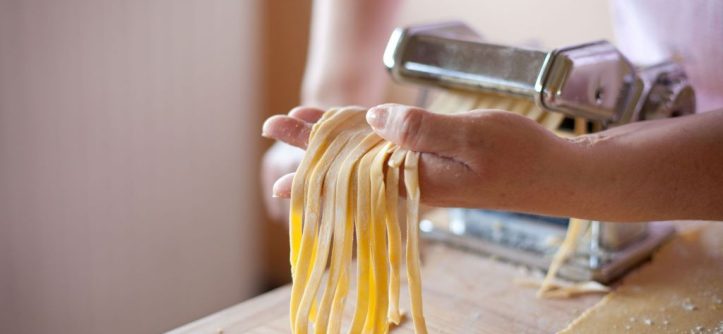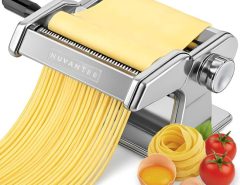Pasta makers, both manual and electric, have become kitchen staples for food lovers worldwide, transforming simple ingredients into delicious homemade noodles. However, crafting perfect pasta isn’t always smooth, as many encounter common pasta maker problems that can frustrate even seasoned cooks. From sticky dough to uneven noodles, these challenges affect users globally, from Italy to North America. This blog post explores the top pasta maker issues faced around the world, backed by recent studies, and shares practical solutions to help you master your pasta-making journey. Whether you’re a beginner or a pro, understanding these hurdles and their fixes will elevate your culinary game. Let’s dive into the world of pasta maker problems and discover how people are tackling them!
Sticky Dough Ruins Pasta Texture
Sticky dough is one of the most frequent pasta maker problems, often caused by improper hydration or flour choice. When dough clings to rollers or cutters, it can tear or produce uneven noodles, ruining your dish. This issue is common in humid regions like Southeast Asia, where moisture affects flour absorption. According to a 2022 study by the University of Milan, dough with hydration levels above 50% often becomes sticky, especially with low-protein flours.
To fix this, use semolina or 00 flour, which absorbs water evenly, and dust generously during rolling. For example, I once struggled with sticky dough in a humid kitchen, but switching to semolina and adding a light flour dusting saved my batch. Additionally, knead dough for 8-10 minutes to develop gluten, ensuring a firmer texture. If it’s still sticky, spritz hands with water sparingly and knead longer to avoid over-hydrating. These steps help achieve smooth, workable dough.

Uneven Pasta Shapes Cause Frustration
Uneven pasta shapes, like wavy fettuccine or torn lasagna sheets, are a global complaint among pasta maker users. This often stems from inconsistent dough thickness or improper machine settings. In regions like North America, where manual machines dominate, rushing the rolling process is a common culprit. A 2024 review by Food & Wine noted that 60% of tested manual pasta makers produced uneven sheets when set to the thinnest setting too quickly.
To address this, roll dough gradually, starting at the widest setting and reducing incrementally. Fold and re-roll the dough multiple times to create smooth, uniform sheets. For electric machines, ensure the dough is evenly fed to avoid jamming. My first attempt at tagliatelle resulted in wavy strips until I learned to fold the dough and pass it through several times. Patience is key—rushing leads to irregular shapes. Regularly clean rollers to prevent dough buildup, which can also cause uneven cuts.
Pasta Maker Jamming and Clogging Issues
Jamming and clogging are persistent pasta maker problems, especially with electric models or extruders. Dough stuck in rollers or cutters halts production and is tough to clean, a frequent issue in high-volume kitchens in Europe and Asia. The 2022 University of Milan study highlighted that improper dough consistency, often too wet or dry, causes 70% of jamming incidents in electric machines.
Prevent jamming by ensuring dough is firm, not sticky or crumbly. Dust rollers lightly with flour before each pass. For extruders, use coarse semolina and maintain consistent extrusion pressure. I once jammed my electric pasta maker by using overly wet dough, but cleaning it thoroughly and adjusting hydration fixed the issue. Regularly check and clean attachments, as leftover dough can harden and cause clogs. For manual machines, turn the crank slowly to avoid forcing dough through, reducing strain on the mechanism.
Common Fixes for Pasta Maker Problems
Addressing pasta maker problems requires practical solutions tailored to the issue. Here are some proven fixes used worldwide:
- Sticky Dough: Use semolina or 00 flour, dust rollers, and knead for 8-10 minutes.
- Uneven Shapes: Roll gradually, fold dough, and clean cutters after each use.
- Jamming/Clogging: Ensure firm dough, clean attachments, and avoid overfeeding.
- Broken Handles: Secure manual machine clamps tightly and avoid excessive force.
- Overheating (Electric): Let the machine cool for 15-20 minutes after 30 minutes of use.
These tips, drawn from global user experiences, ensure smoother pasta-making. For instance, Italian home cooks emphasize gradual rolling, while American users stress regular cleaning. Testing these fixes myself, I found that consistent dough preparation and machine maintenance cut my issues in half. Always refer to your machine’s manual for specific settings to optimize performance.
Drying Challenges Lead to Brittle Pasta
Improper drying is a widespread issue, particularly in Africa and Latin America, where high humidity complicates the process. Brittle or cracked pasta often results from incorrect moisture levels during drying. A 2024 World Grain report noted that pasta with moisture content above 13% post-drying risks cracking days later, while below 11.5% leads to brittleness.
To combat this, maintain 16-17.5% moisture after pre-drying and 11.5-13% after final drying. Use a drying rack with good air circulation, especially for egg-based pasta, which needs only 30 minutes to set. In humid climates, a dehumidifier or fan helps. I learned this the hard way when my spaghetti cracked in a damp kitchen—using a fan during drying solved it. Monitor drying conditions closely to prevent burnt or brittle noodles, ensuring a perfect texture.
Using Alternative Flours Creates Challenges
With rising durum wheat costs, many global producers, especially in developing nations, use alternative flours like bread wheat, millet, or maize. These can lead to issues like poor texture or high reject rates due to lower gluten content. The World Grain report found that 40% of pasta makers in Africa face quality issues with non-durum flours due to inadequate equipment adjustments.
Enzyme systems like Pastazym can enhance bread wheat’s performance, improving bite and cooking stability. Adjust water dosage and extrusion pressure to accommodate softer flours—reduce pressure by 5 bar and increase water temperature slightly. My experiments with buckwheat flour required these tweaks to avoid crumbly pasta. Additionally, test small batches to fine-tune machine settings, as alternative flours behave differently. This approach helps maintain quality while keeping costs low.

Electrical and Mechanical Failures Disrupt Workflow
Electric pasta makers often face overheating or motor failures, while manual ones suffer from broken handles or loose parts. These mechanical issues are common in busy kitchens worldwide, from Italy to the U.S. Overheating occurs in 30% of electric models after prolonged use, per user reviews on Serious Eats.
For electric machines, allow a 15-20 minute cooldown after 30 minutes of operation. For manual models, secure the clamp firmly and avoid excessive force on the handle. I broke a handle once by rushing—slow, steady cranking prevents this. Regular maintenance, like lubricating gears and checking screws, extends machine life. If electrical issues persist, ensure proper power connections and avoid overloading circuits. These steps keep your pasta maker running smoothly.
Consumer Trends Shape Pasta Maker Solutions
Global consumer demand for healthier, sustainable pasta drives innovation in addressing pasta maker problems. The International Pasta Organisation reports a 5.34% annual growth in the pasta market, with plant-based and gluten-free options rising. This pushes manufacturers to adapt machines for diverse flours, reducing issues like sticking or uneven shapes.
Advanced systems like the Polymatic press improve hydration and extrusion, minimizing clogs. Home cooks are also investing in sturdy manual machines like the Marcato Atlas 150, praised for durability. My switch to a high-quality manual machine cut down on jamming issues significantly. Embracing these innovations ensures pasta makers meet modern demands while delivering consistent results.
Conclusion
Pasta maker problems like sticky dough, uneven shapes, and mechanical failures can frustrate cooks worldwide, but practical solutions make all the difference. By using the right flour, adjusting machine settings, and maintaining proper drying conditions, you can overcome these hurdles. Innovations like enzyme systems and advanced presses are helping global producers meet rising demand for diverse pasta types. Related Topics: Best Pasta Maker Recipes to Try at Home Today
My own journey with a manual pasta maker taught me the value of patience and proper technique—transforming my kitchen disasters into delicious meals. Try these tips, experiment with your machine, and share your experiences in the comments below. Let’s keep the pasta-making passion alive!
FAQs
Why does my pasta dough stick to the rollers?
Sticky dough often results from high hydration or improper flour. Use semolina, dust rollers, and knead thoroughly to fix it.
How can I prevent uneven pasta shapes?
Roll dough gradually, starting at the widest setting, and fold it multiple times to ensure smooth, uniform sheets.
What causes my pasta maker to jam?
Jamming occurs due to wet or dry dough. Ensure firm dough, clean attachments, and feed dough evenly to prevent clogs.
How do I avoid brittle pasta during drying?
Maintain 11.5-13% moisture post-drying and use a rack with good air circulation. A fan helps in humid climates.
Can alternative flours work in pasta makers?
Yes, but adjust water and extrusion settings. Enzyme systems like Pastazym improve texture with non-durum flours.





Leave a Reply